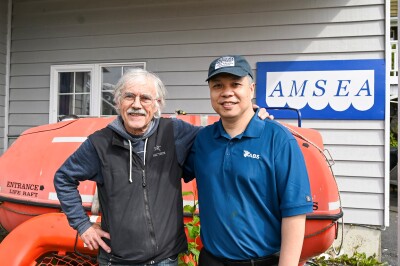"All the empty shells are the oysters that have died," Captain Ed Farley says. "But we do have some live oysters mixed in here." Farley bends to sort through the oysters on the deck of his skipjack, the H.M. Krentz. "This oyster bed," he tells the tourists assembled in front of him, "died in 1985 from the parasites that wiped out the rest of the area."
A middle-aged travel agent from New Jersey named Lori Zimmerman asks, "Don't they know how to manage the parasite?"
Farley fixes her with a stare. "We haven't learned how to manage the common cold, have we?" he asks.
Zimmerman looks abashed.
"The answer's no," Farley says.
"Yeah, okay."
Farley, perhaps recognizing his gruffness, launches into a scientific explanation of the parasite that destroyed this bed.
When you begin a new career at 61, you're bound to hit snags.
Farley is building a tourism business around his expertise in the Chesapeake Bay. After a winter spent oystering, Farley fills his summer with educational sailing tours on his historic skipjack. This sail-powered oystering boat is part of a rapidly dissolving fleet; with only 23 still in the water, he says, a mere six skipjacks continue to oyster. The dwindling fleet was designated one of America's 11 Most Endangered Historic Places in 2002.
Read the full story at Washington Post>>






